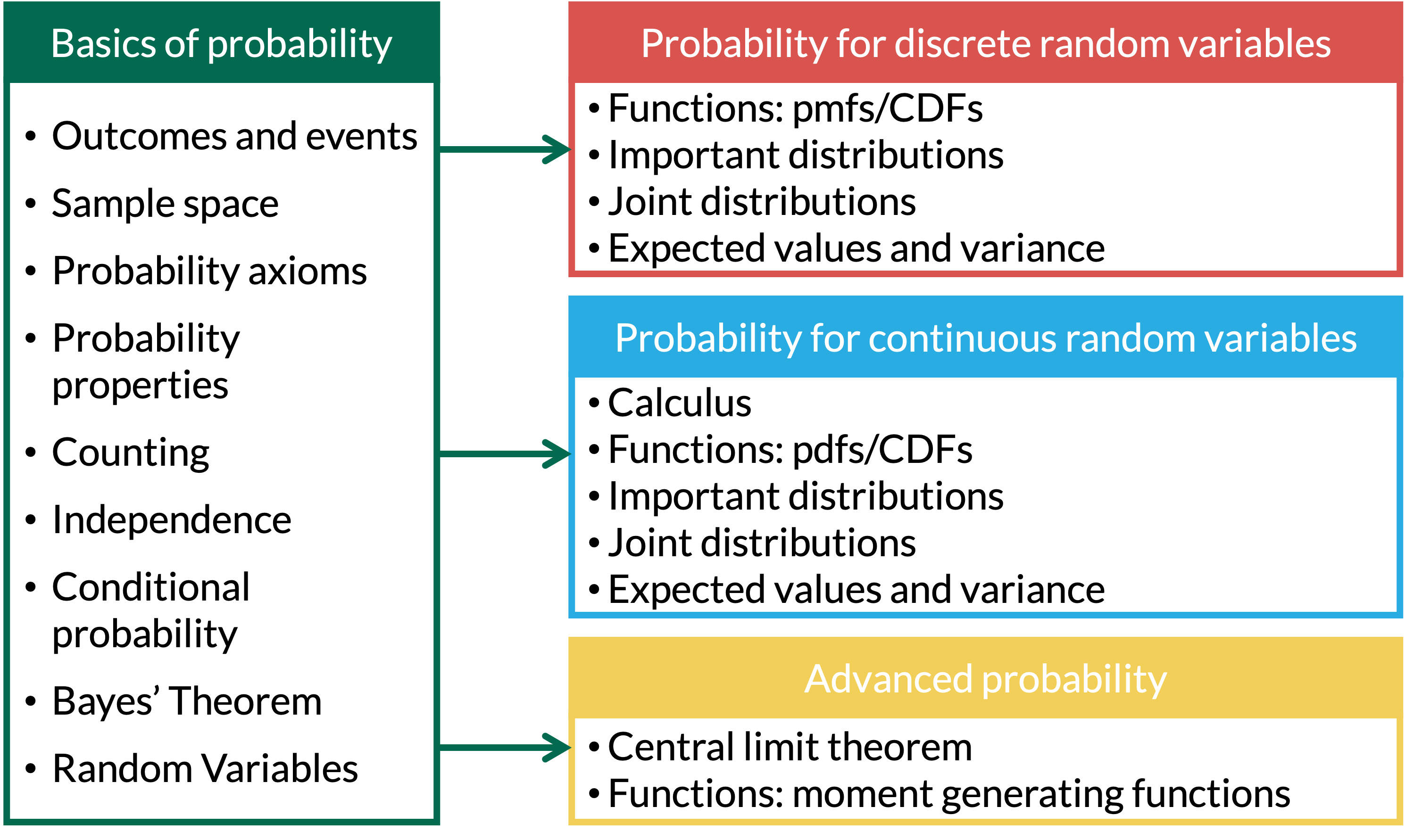Chapter 43: Moment Generating Functions
Learning Objectives
- Learn the definition of a moment-generating function.
- Find the moment-generating function of a binomial random variable.
- Use a moment-generating function to find the mean and variance of a random variable.
Where are we?

What are moments?
Definition 1
The \(j^{th}\) moment of a r.v. \(X\) is \(\mathbb{E}[X^j]\)
Example 1
\(1^{st}-4^{th}\) moments
What is a moment generating function (mgf)??
Definition 3
If \(X\) is a r.v., then the moment generating function (mgf) associated with \(X\) is: \[M_X(t)= \mathbb{E}[e^{tX}]\]
Remarks
For a discrete r.v., the mgf of \(X\) is \[M_X(t)= \mathbb{E}[e^{tX}]=\sum_{all \ x}e^{tx}p_X(x)\]
For a continuous r.v., the mgf of \(X\) is \[M_X(t)= \mathbb{E}[e^{tX}]=\int_{-\infty}^{\infty}e^{tx}f_X(x)dx\]
- The mgf \(M_X(t)\) is a function of \(t\), not of \(X\), and it might not be defined (i.e. finite) for all values of \(t\). We just need it to be defined for \(t=0\).
Example
Example 4
What is \(M_X(t)\) for \(t=0\)?
Theorem
Theorem 5
The moment generating function uniquely specifies a probability distribution.
Theorem 6
\[\mathbb{E}[X^r] = M_X^{(r)}(0)\]
\((r)\) in this equation is the \(r\)th derivative with respect to \(t\)
- When \(r=1\), we are taking the first derivative
- When \(r=4\), we are taking the fourth derivative
Using the mgf to uniquely describe a probability distribution
Example 7
Let \(X \sim Poisson(\lambda)\)
Find the mgf of \(X\)
Find \(\mathbb{E}[X]\)
Find \(Var(X)\)
Theorem
Remark: Finding the mean and variance is sometimes easier with the following trick
Theorem 8
Let \(R_X(t) = \ln[M_X(t)]\). Then,
\[\mu = \mathbb{E}[X] = R_X'(0) \text{, and}\] \[\sigma^2 = Var(X) = R_X''(0)\]
Proof.
Using \(R_X(t)\) to uniquely describe a probability distribution
Example 9
Let \(X \sim Poisson(\lambda)\).
Find \(\mathbb{E}[X]\) using \(R_X(t)\)
Find \(Var(X)\) using \(R_X(t)\)
Using the mgf to uniquely describe the standard normal distribution
Example 10
Let \(Z\) be a standard normal random variable, i.e. \(Z \sim N(0,1)\).
Find the mgf of \(Z\)
Find \(\mathbb{E}[Z]\)
Find \(Var(Z)\)
Mgf’s of sums of independent RV’s
Theorem 9
If \(X\) and \(Y\) are independent RV’s with respective mgf’s \(M_X(t)\) and \(M_Y(t)\), then
\[M_{X+Y}(t) = E[e^{t(X+Y)}] = E[e^{tX} e^{tY}] = E[e^{tX}]E[e^{tY}]=M_{X}(t)M_{Y}(t)\]
Main takeaways
Mgf’s are a purely mathematically definition
- We can’t really relate it to our real world analysis
They are helpful mathematically because they are unique to a probability distribution
- We can find the unique mgf from for a probability distribution
- And we can find a distribution from an mgf
Mgf’s can sometimes make it easier to find the mean and variance of an RV
Mgf’s are most helpful when we are finding a joint distribution that is a sum or transformation of two RV’s
- Make the calculation easier!
Mgf’s are often used to prove certain distribution are sums of other ones!